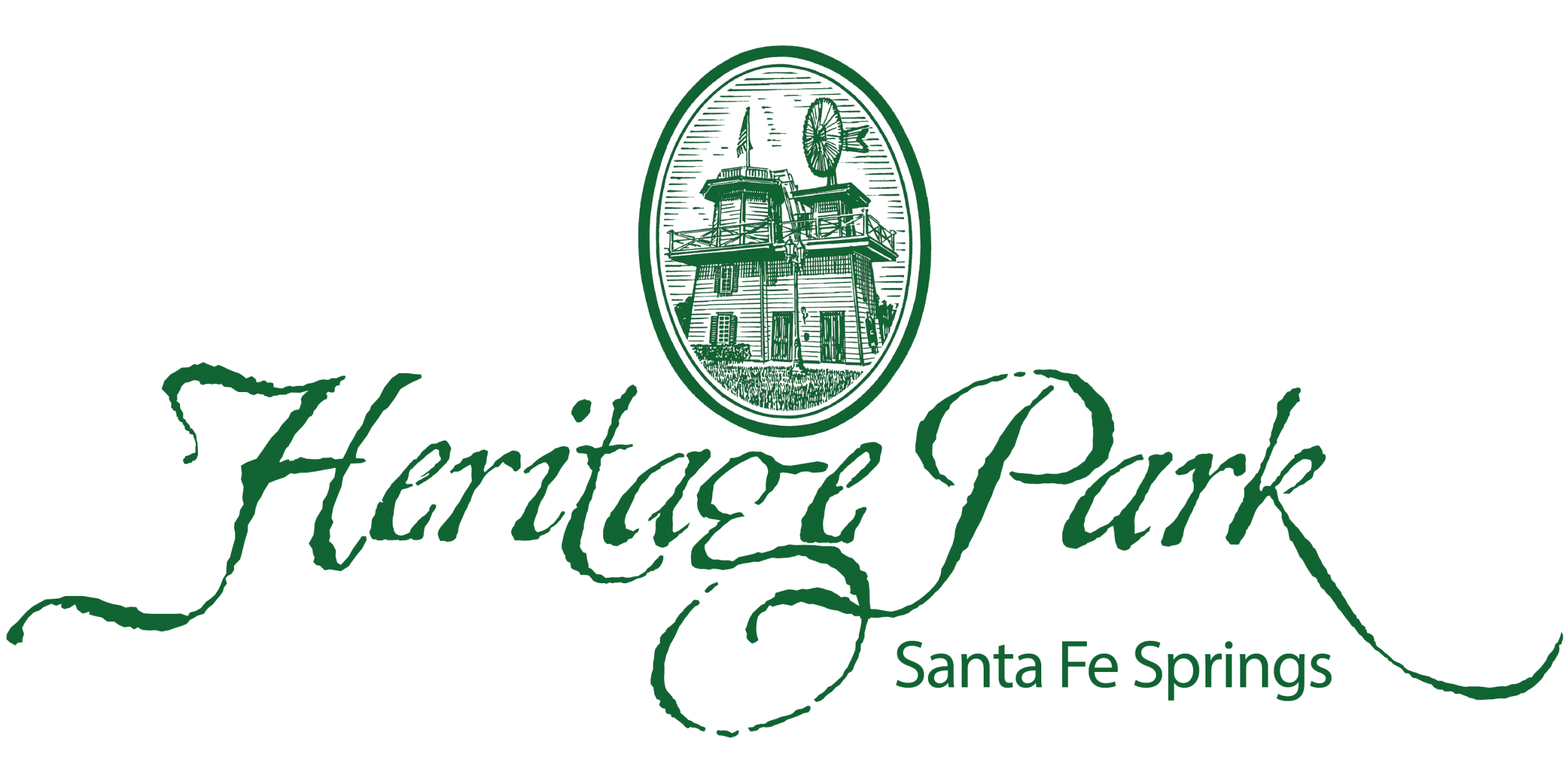
Heritage Park Audio Tour
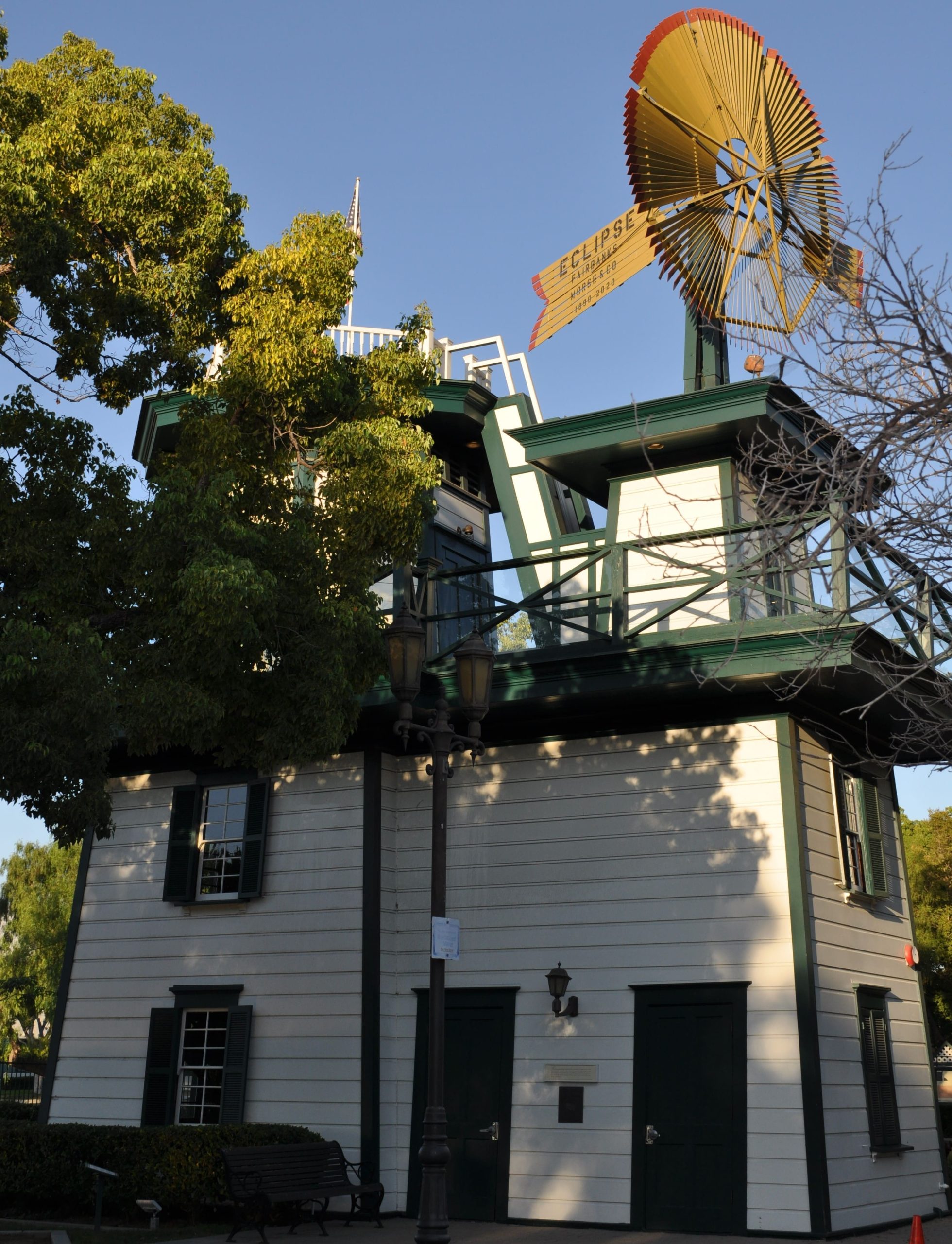
Entrance Introduction
Hello and welcome to “Heritage Park Audio Tours” presented by the City of Santa Fe Springs. As you journey throughout the park, fully immerse yourself into our exhibits and embark on a greater experience. Using your phone, scan the QR codes around the displays and hear the history of our exhibits come to life. Walk your own path, at your own pace, and discover the many wonders at Heritage Park. Happy Scanning!

Oil Field Office & the Oil Boom (History)
The oil boom in the city was no surprise. Early farmers would often drill into pockets of gas when installing water wells. Although the surprise to find oil was low, the process proved to be difficult. The oil drilling began in the early 1890s and would not provide great success until “Union Oil” would construct a functioning well, the Meyer #3 on October 3, 1919. The Oil Field office would later be constructed, serving as the resting hub for the men working the oil rigs on the estate. At the peak of oil production in 1927, the oil fields were producing 400,000 barrels a day and provided the Country with 1/6th of the nation’s oil output. In 1941, the Oil Field Office would catch fire, setting ablaze 2 surrounding oil derricks. Although most of the building was lost, it was later reconstructed, and it now provides adequate working space for our rangers and wonderful park staff. Feel free to stop in, say hello and ask questions!
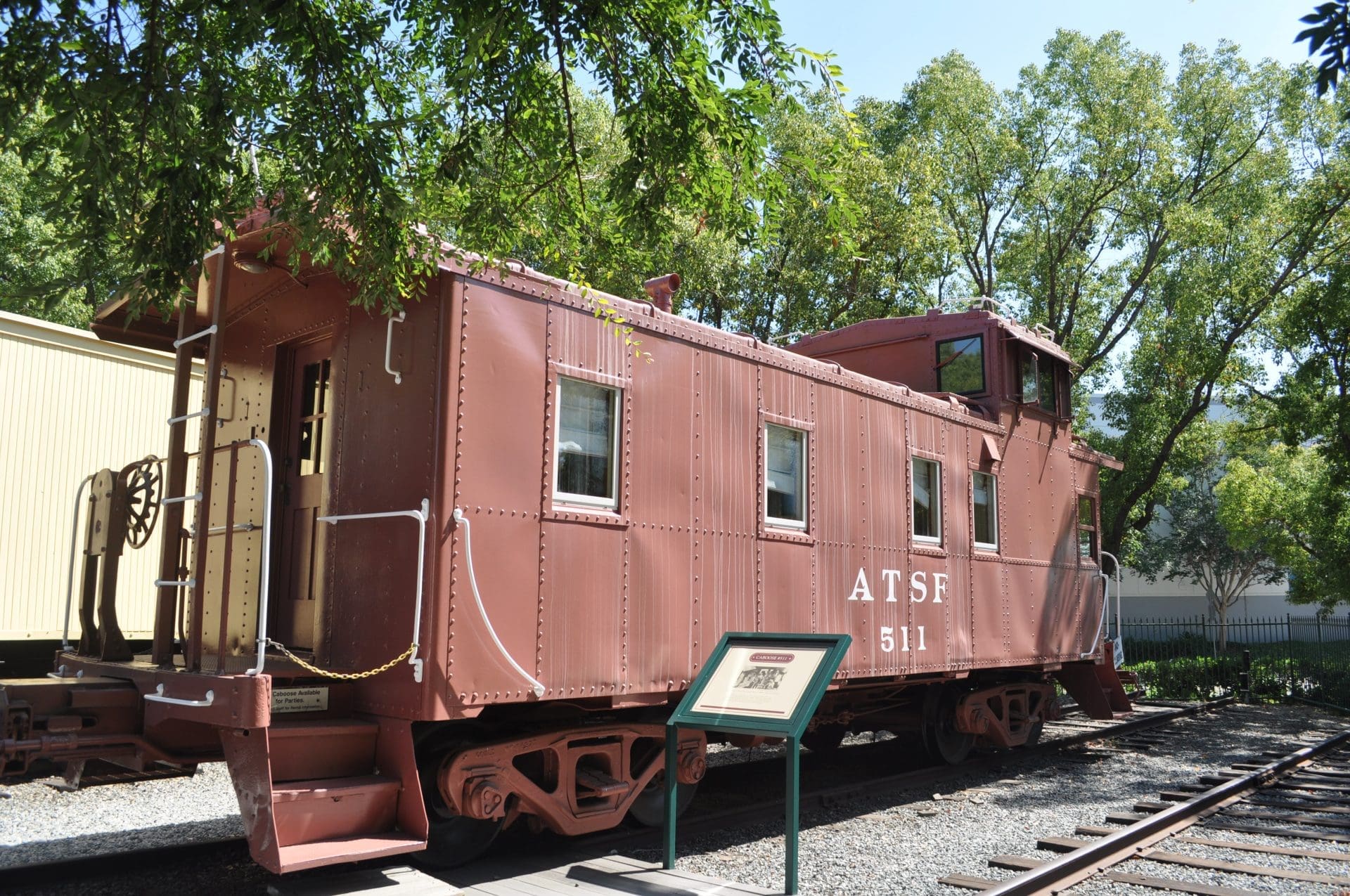
Caboose 511
Caboose 511 was built in 1949, by the Atchison Topeka & Santa Fe Railway shops. A Caboose was a rolling office for the train’s conductor, and also provided a vantage point to watch for problems on the train. The car was retired from service in the late 1980s, and its exterior has been restored to its 1949 appearance. It was donated to the City of Santa Fe Springs by the Santa Fe Railway. Today, the caboose can be rented and utilized for parties or a picnic. For more information, please ask our friendly park staff at our main office.
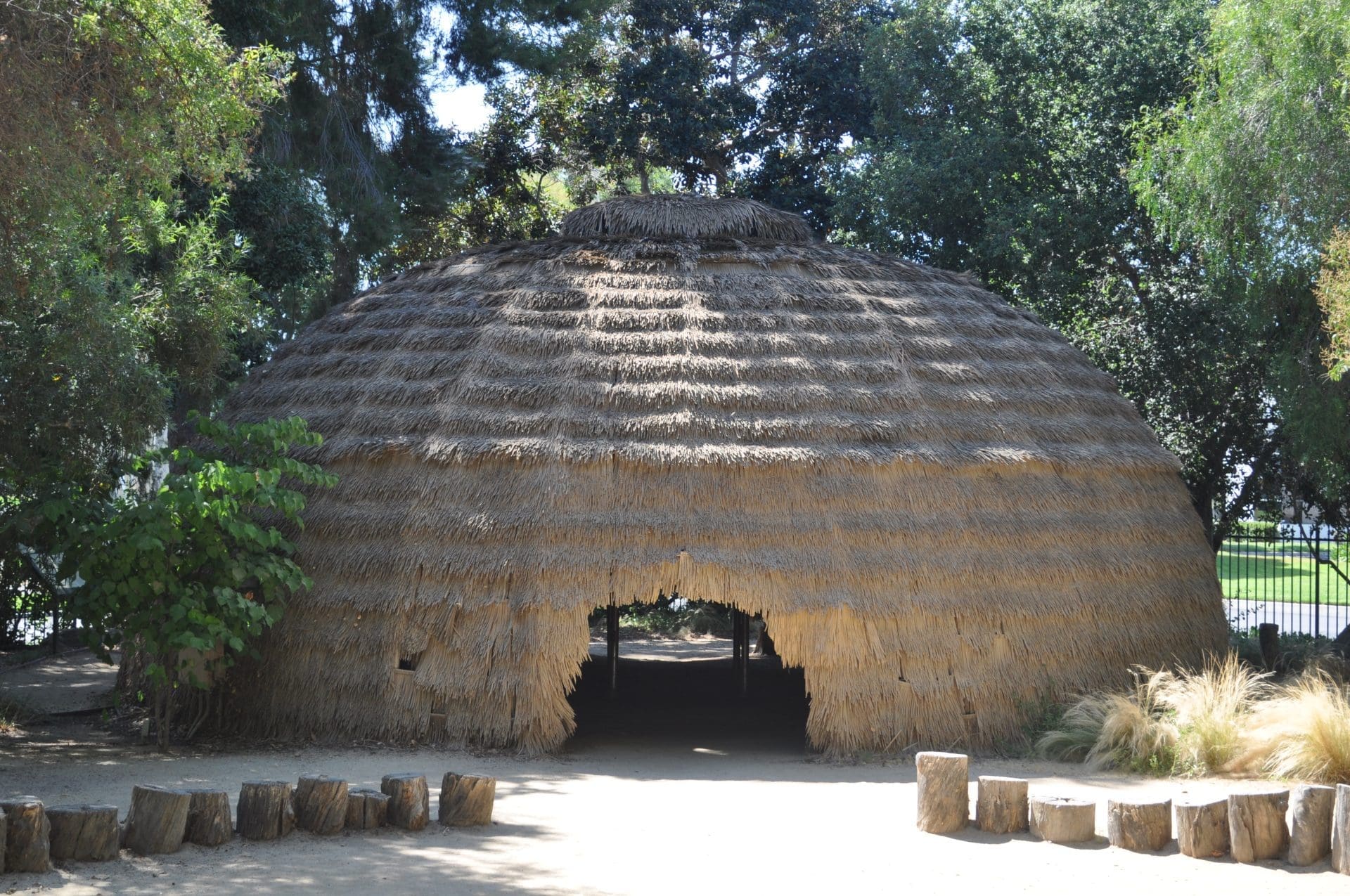
Native American Exhibit (Tongva Nation)
Welcome to the incredible world of the Tongva nation, the first people of Santa Fe Springs, and “the People of the Land”. The exhibit you are entering was dedicated to the city on September 15, 1999, and recreates a village called “Chokiishngna”. Built by the descendants of the Tongva people, this village is comprised of a Ki or Kich, the home of the family, Arena, Sweat-lodge, and Tomada. For the Tongva people, their lives revolved around the concept that all life is one: human, animal, plant, the spirit world and even the world of stone and mineral. Carefully harvesting resources they needed, the Tongva felt a responsibility for the world around them and an awareness of the delicate balance of humans, animals and plants. Spanning across Los Angeles to South Orange Counties, from the San Gabriel Mountains to the Channel Islands, the tribe’s location and transportation system through waterways made them one of the most successful tribes in California. Yet, within a single lifetime, their successful tribal world would change forever and almost all would be gone. In the 1542 Spanish explorer Juan Cabrillo would travel the California Land’s. Further expeditions would proceed; however, the full establishment of the Spanish would not occur until 1671. Throughout this time the Spanish would not only bring their faith, with the construction of the San Gabriel Mission, they would bring disease, such as measles, small pox, influenza, etc. and force their culture on the Tongva People, wiping them of their customs, clothing, food, language. The Tongva would not allow these changes to go without conflict, as revolts against the Spanish occurred. Unfortunately, these revolts were unsuccessful and were responded with a greater Spanish ferocity. Fortunately, the Tongva survived this area of force assimilation. Known also as “Tongva Gabrieleno”, the tribe has since received recognition from the State of California, continuing to preserve and share their way of life of their ancestors.
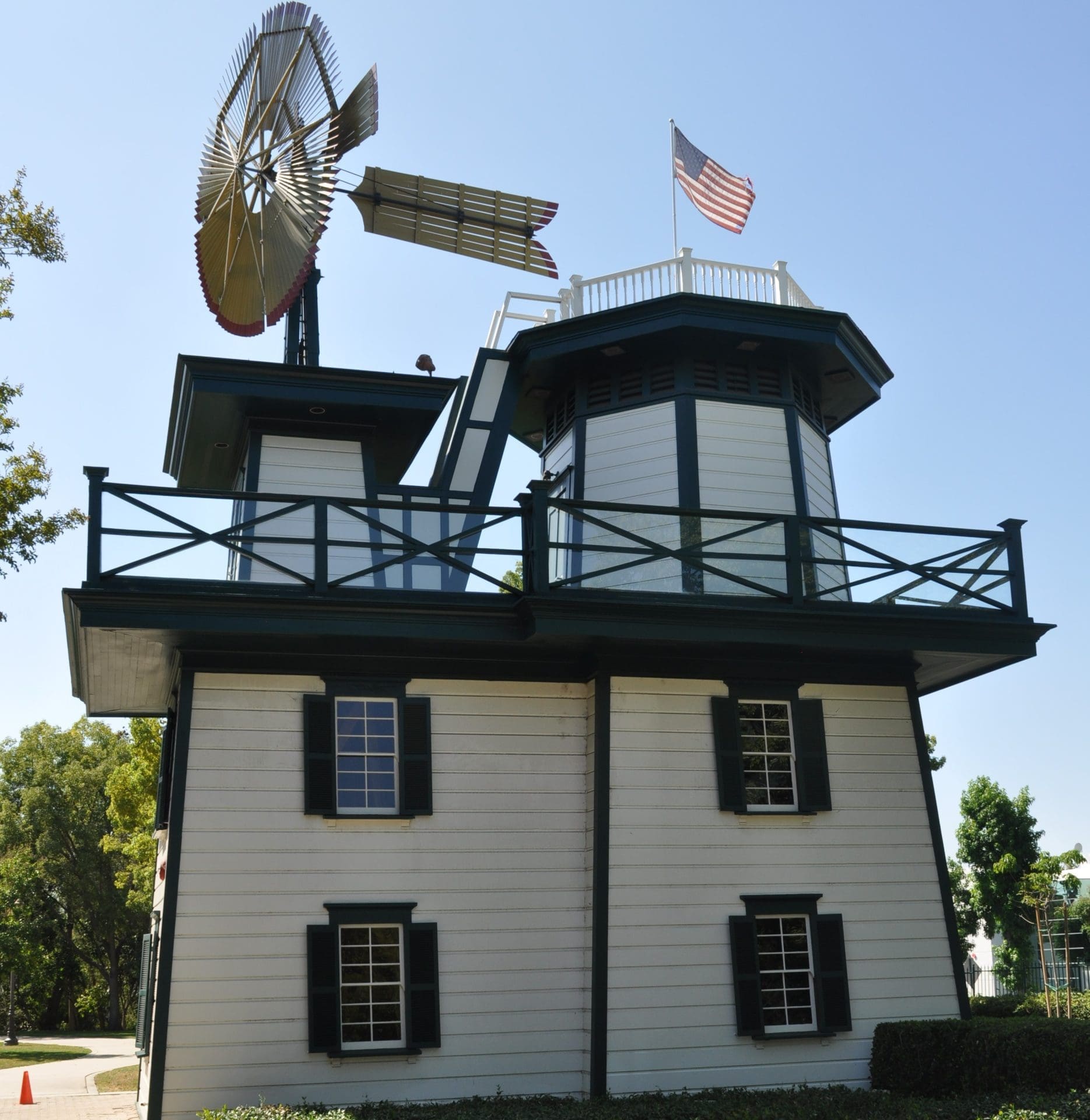
Windmill and Tank House
Our most elaborate building, the Windmill and Tank house, are reconstructions of the original building Eli Hawkins built from the 1880s. Once serving as an irrigation and water storage tool, this beautiful building still operates as it once did; pulling water from underground wells with the power of wind. Excess water pulled, from stronger windy days, is captured and pumped into the adjacent reservoir for future use. The interior of this building is assessable through our park tours and has a panoramic view of the entire park.
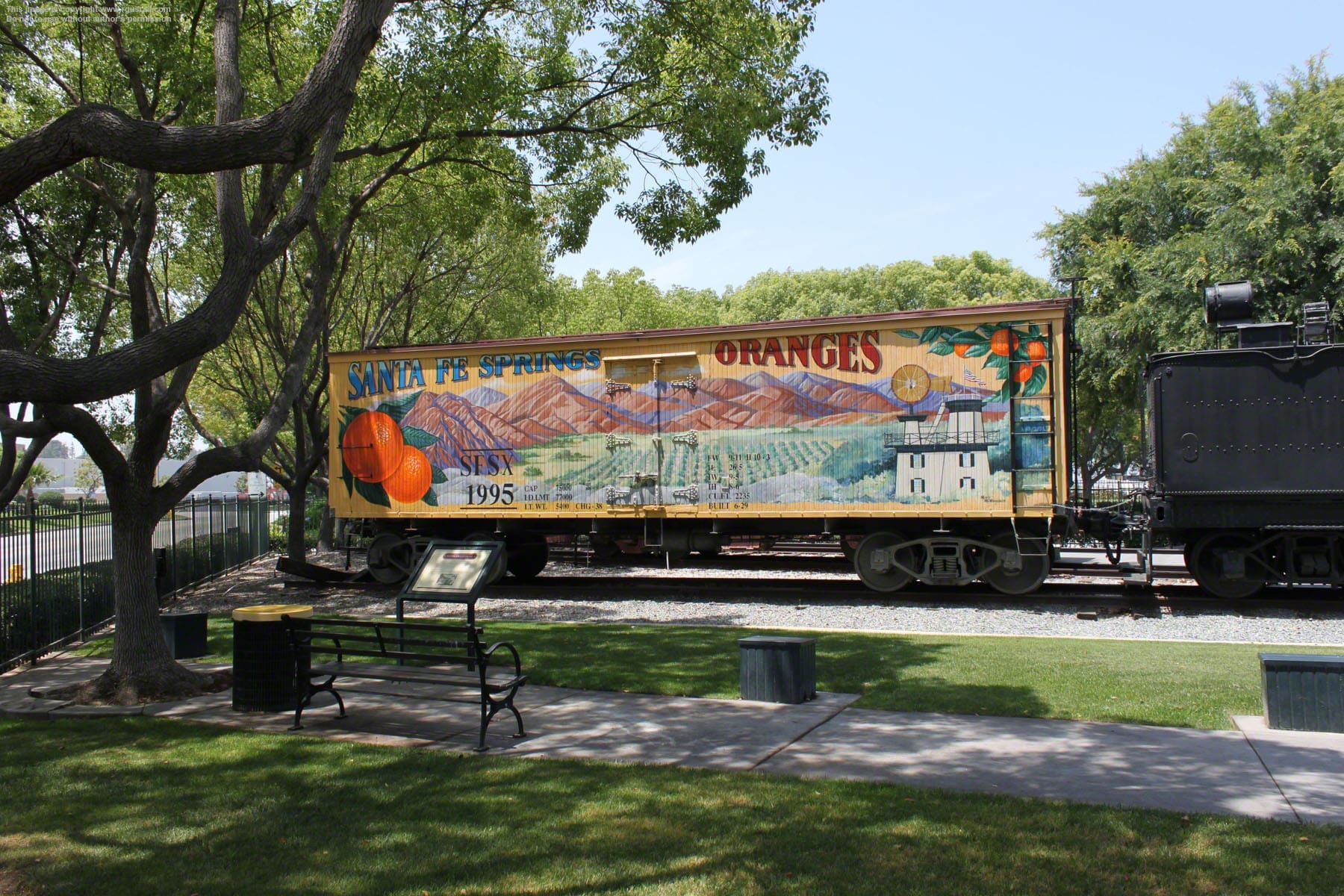
Refrigerated Boxcar
The construction of the Santa Fe and Southern Pacific rail-lines, allowed for Santa Fe Springs to be an ideal hub for development and distribution. The line aided the ability for local citrus farmers to move their goods to new markets. The creation of the refrigerated boxcar in 1890, extended farmers’ capabilities to reach further markets without the risk of crops spoiling. The exhibit you see before you is typical of those which transported the citrus crops from the area when this city was covered with orange groves.
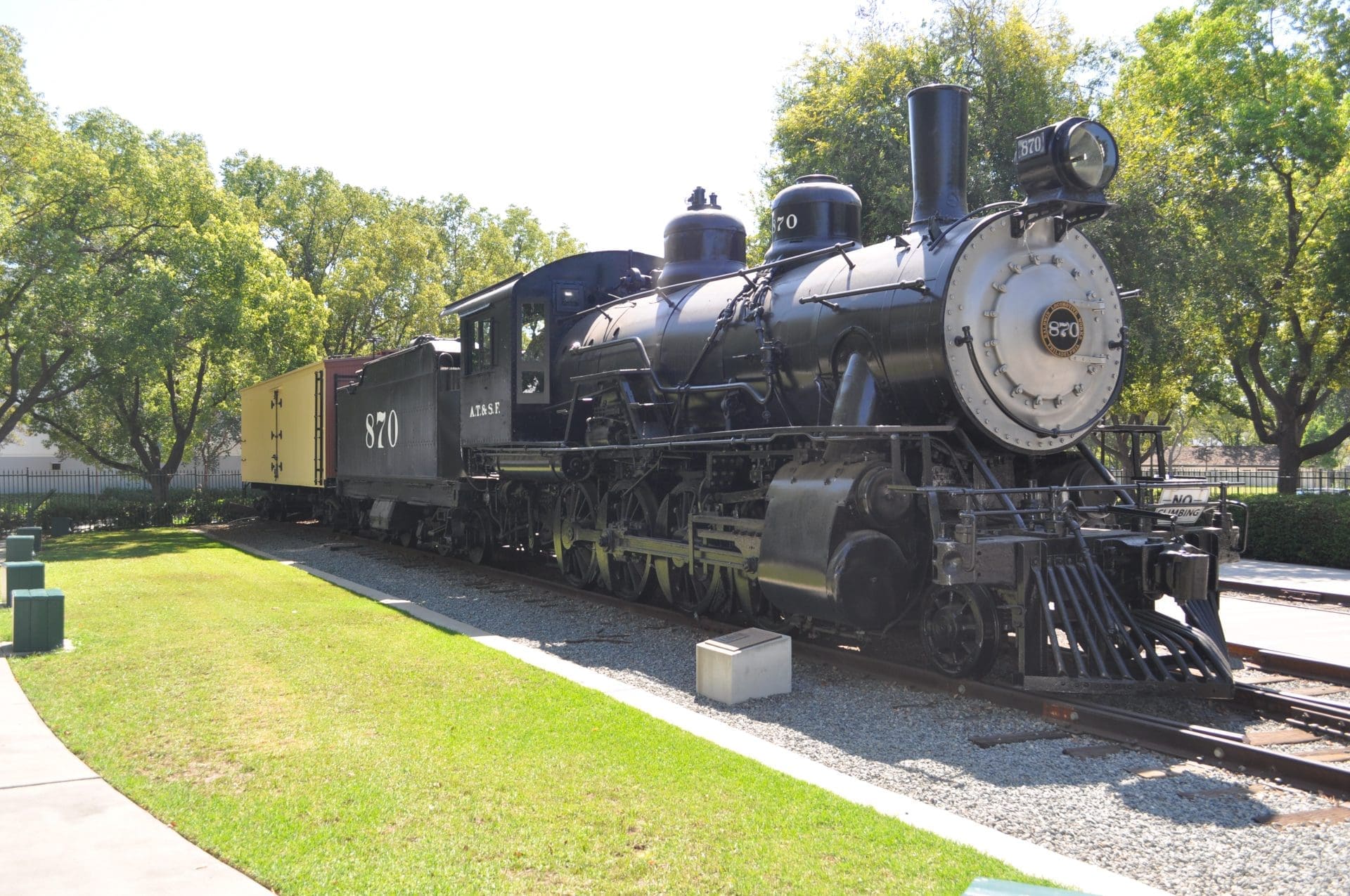
Train 870
Before you, is the incredibly majestic Atchison Topeka & Santa Fe Locomotive No. 870. Originally built in 1906 for the St. Louis, Rocky Mountain and Pacific Railroad, No. 870 was one of the largest locomotives of its day. In 1940, the locomotive was sold to Albuquerque & Cerrillos Coal. After the company’s 10-year use of the engine, it was abandoned in the mountainside of Madrid, New Mexico. In 1988 the City of Santa Fe Springs would purchase the locomotive from the small city for restoration and display. After the hard work from our public works staff, the locomotive has been restored to its 1920s condition, and has sat on the park grounds since 1994.
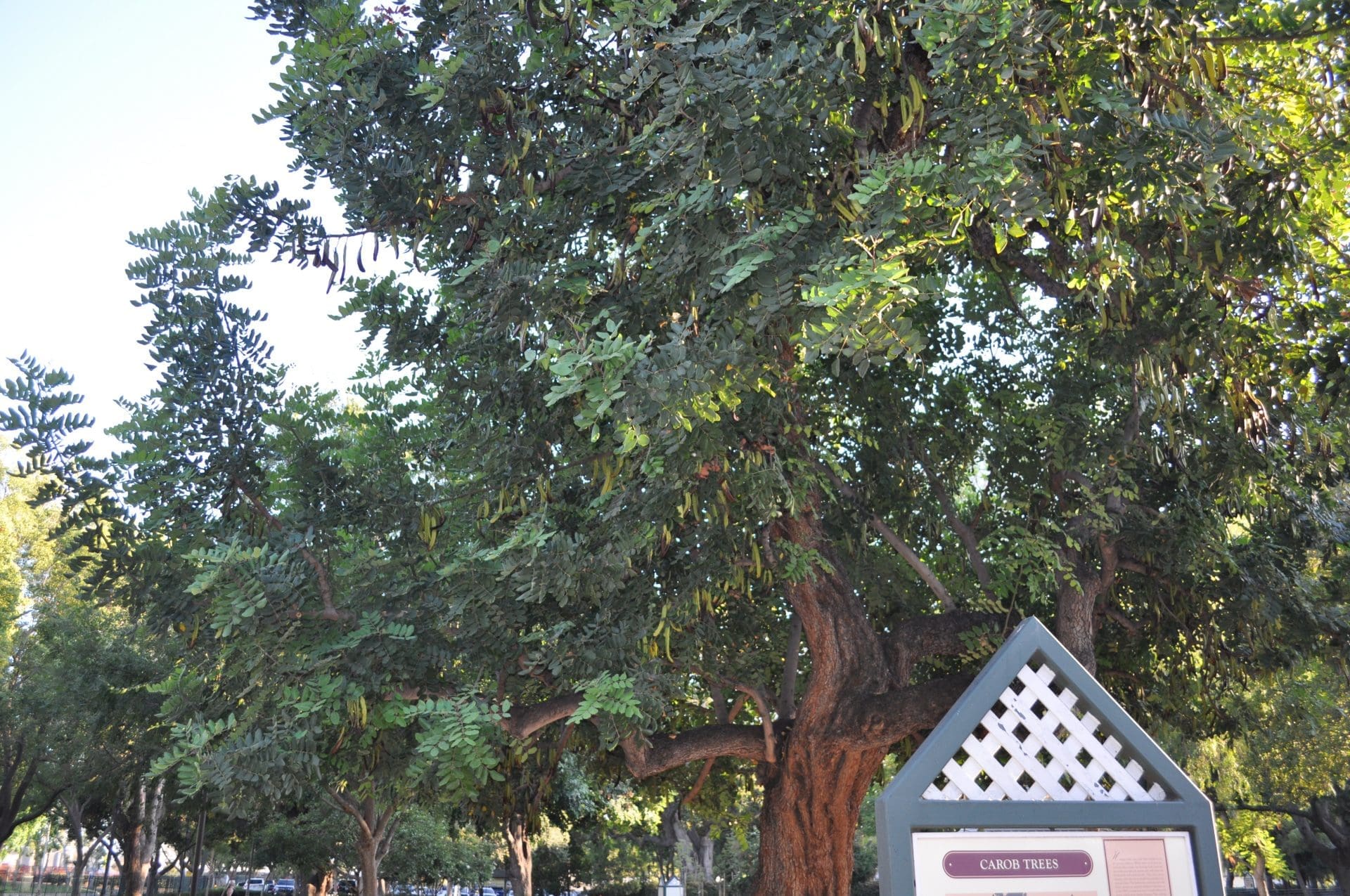
The Carob Trees
The beautiful Carob Tree is a unique and fascinating addition to the park. The exact date of the tree’s planting is unknown, but it has been part of the site’s history as well as other locations worldwide. What gives this tree its uniqueness, is its monecious make-up; meaning the tree contains both male and female anatomical structures. This proved to be a benefit to the Slusher family as this trait saved space and the increased the specie’s capability to be hardy growers in semi-arid Southern California. In the 1950s Mrs. Slusher had cuttings sent to South Africa and Israel, increasing interest for the plant to be used in cultivation, with additional countries, Australia and Chile later receiving cuttings. While traditionally used as food for livestock, the carob can be used as a substitute for chocolate. The tree you see before you is capable of producing over 400lbs of carob pods per year.
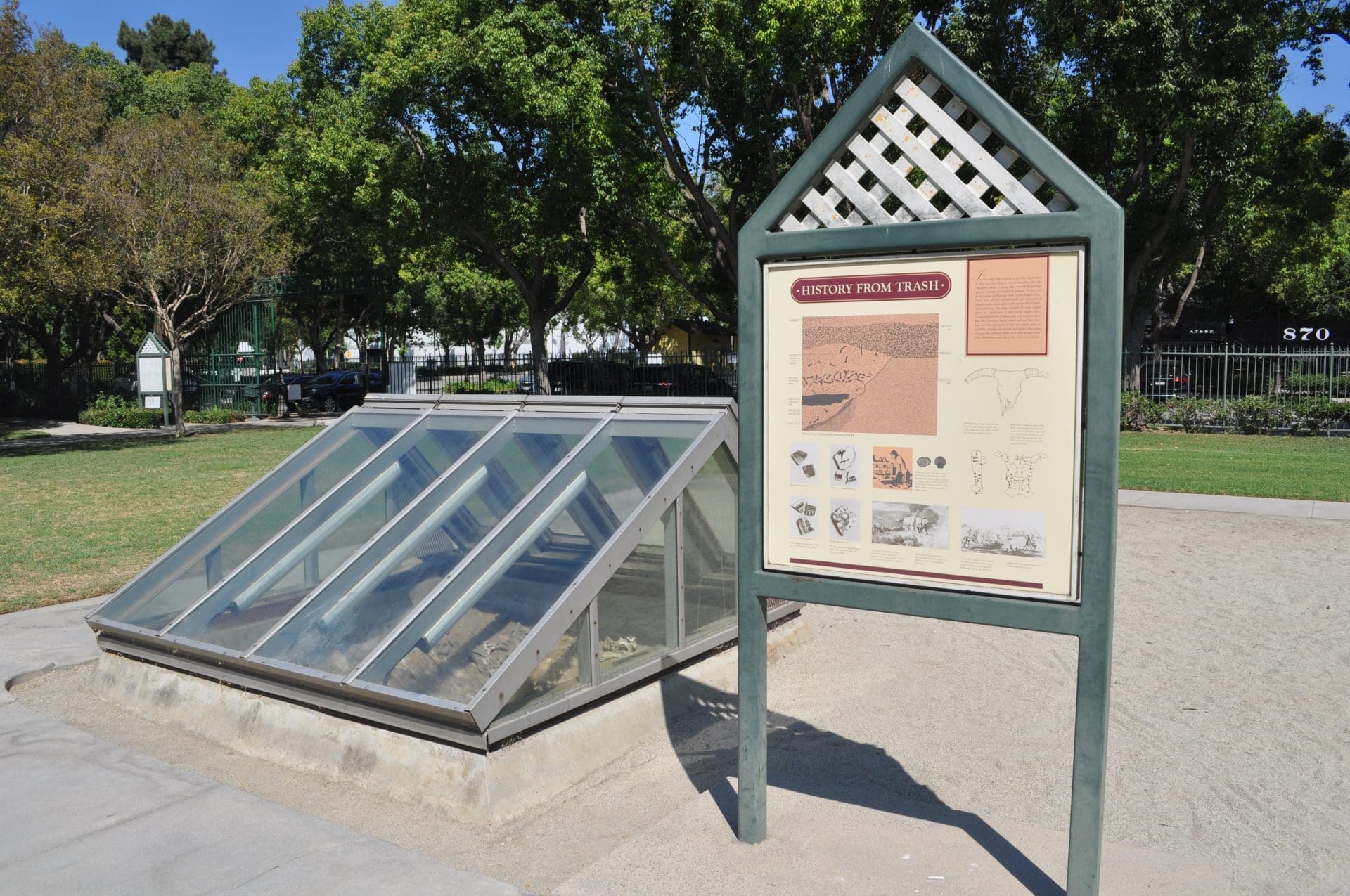
Historic Trash Pit
There is a saying, “one person’s trash is another’s treasure”, and for us, this trash pit has provided us an important visualization to the past. When the park was developed in 1988, archaeologist excavated part of this buried trash, discovering valuable information to the rancho lifestyle. Used by the Ontiveros family, this pit is where the family dumped their household garbage and remains of animals they ate. In addition to garbage and remains, broken pottery, that had been imported, suggest the Ontiveros were wealthy. The remains you see are part of the collection found during excavation.
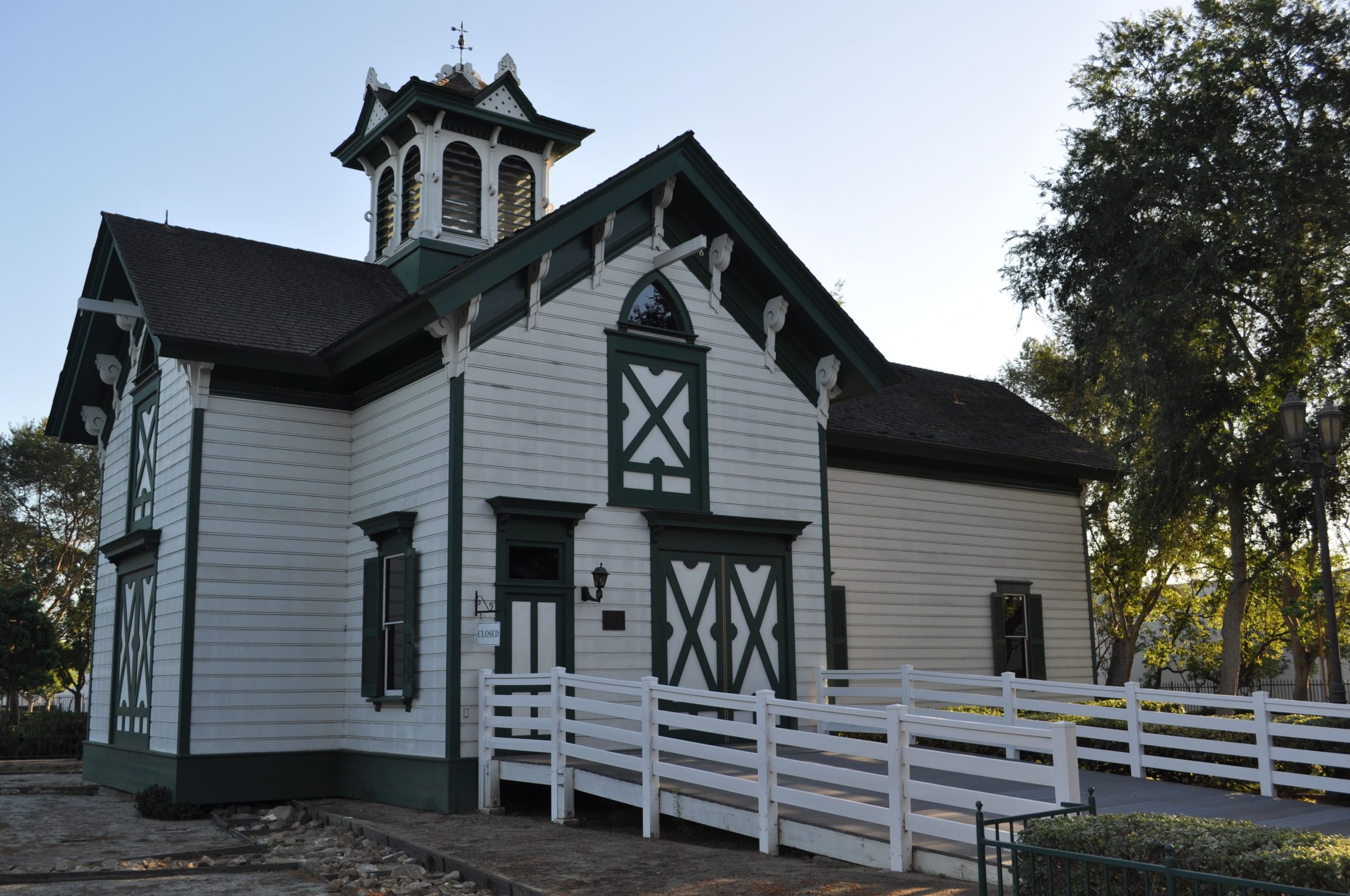
The Carriage Barn
Eli Hawkins constructed the Carriage Barn in the 1880s, which housed his carriages, horses and caretaker. The structure had a Carpenter Gothic-style architecture, and cost $5,000 to build, making it the county’s most expensive barn at the time. The 1st floor housed horses, carriages, and space for maintenance equipment. The upper loft would store the hay for the horses and space for the caretaker of the barn. The present Carriage Barn was reconstructed after the original burned down in 1969. Within the Barn you can find additional exhibits to view. Please, step-in and say hello to our friendly staff!
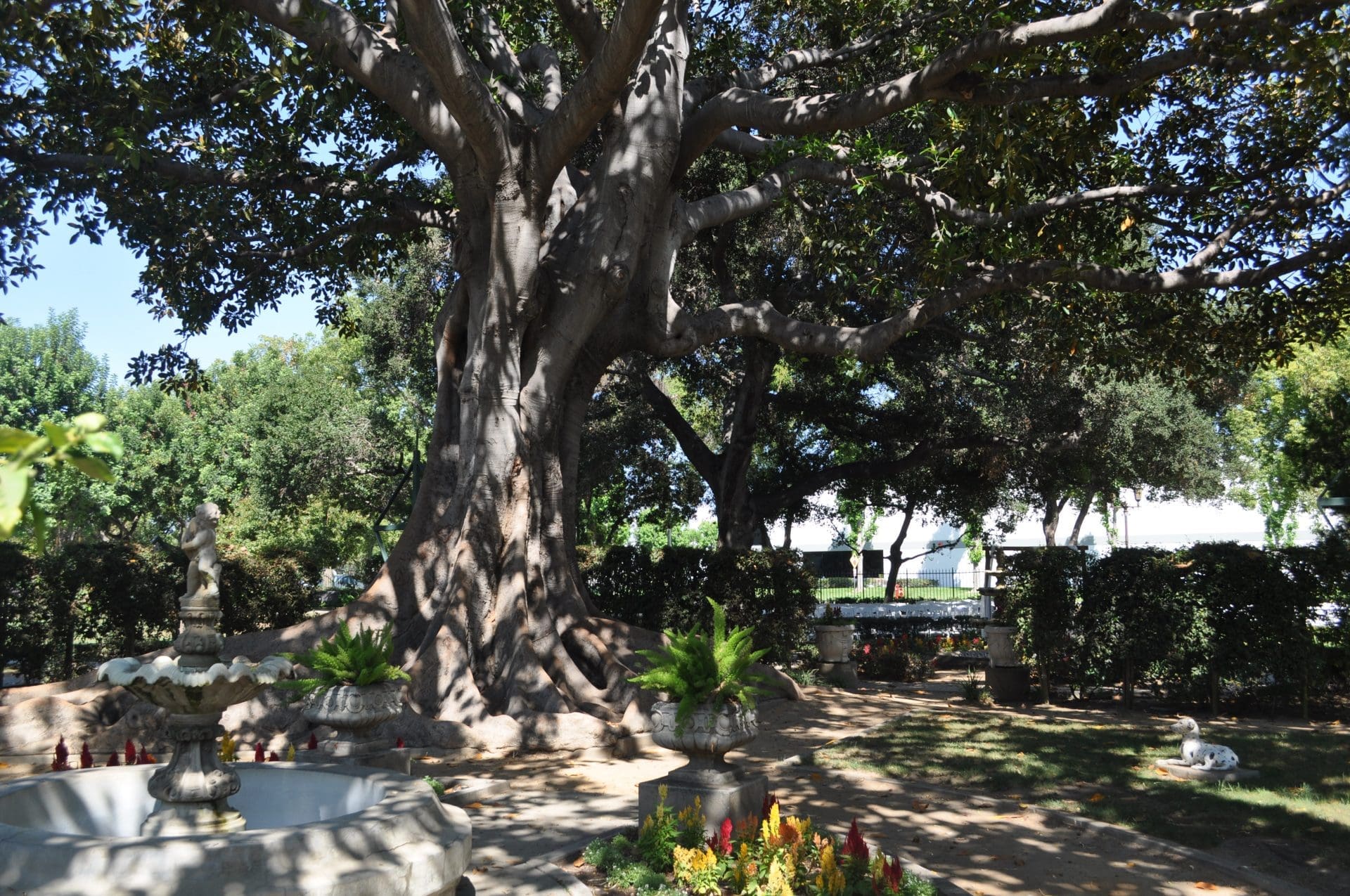
The Formal Garden
In the 1890s the Los Angeles Times called the estate the “showplace of the county”. The Formal Garden was the centerpiece to the Hawkins property, and contributed to this title from the exotic fauna and fountain displays. Located near the front porch of the home, this became an important setting for social events. Around the garden stood citrus trees of oranges and lemons. The center of the garden has reconstructions of concrete fountains, which Eli Hawkins installed, being the first of their kind in Southern California. The next owner of the estate, Martha Nimocks, would add the statuary in 1890s. With the vast collection of exotic fauna and the fountain displays, enticed tourists to view the gardens and estate, proclaiming the area to be known as “Fairyland”. Today, the Formal Gardens can be used for wedding ceremonies or beautiful backdrop for formal photo sessions.
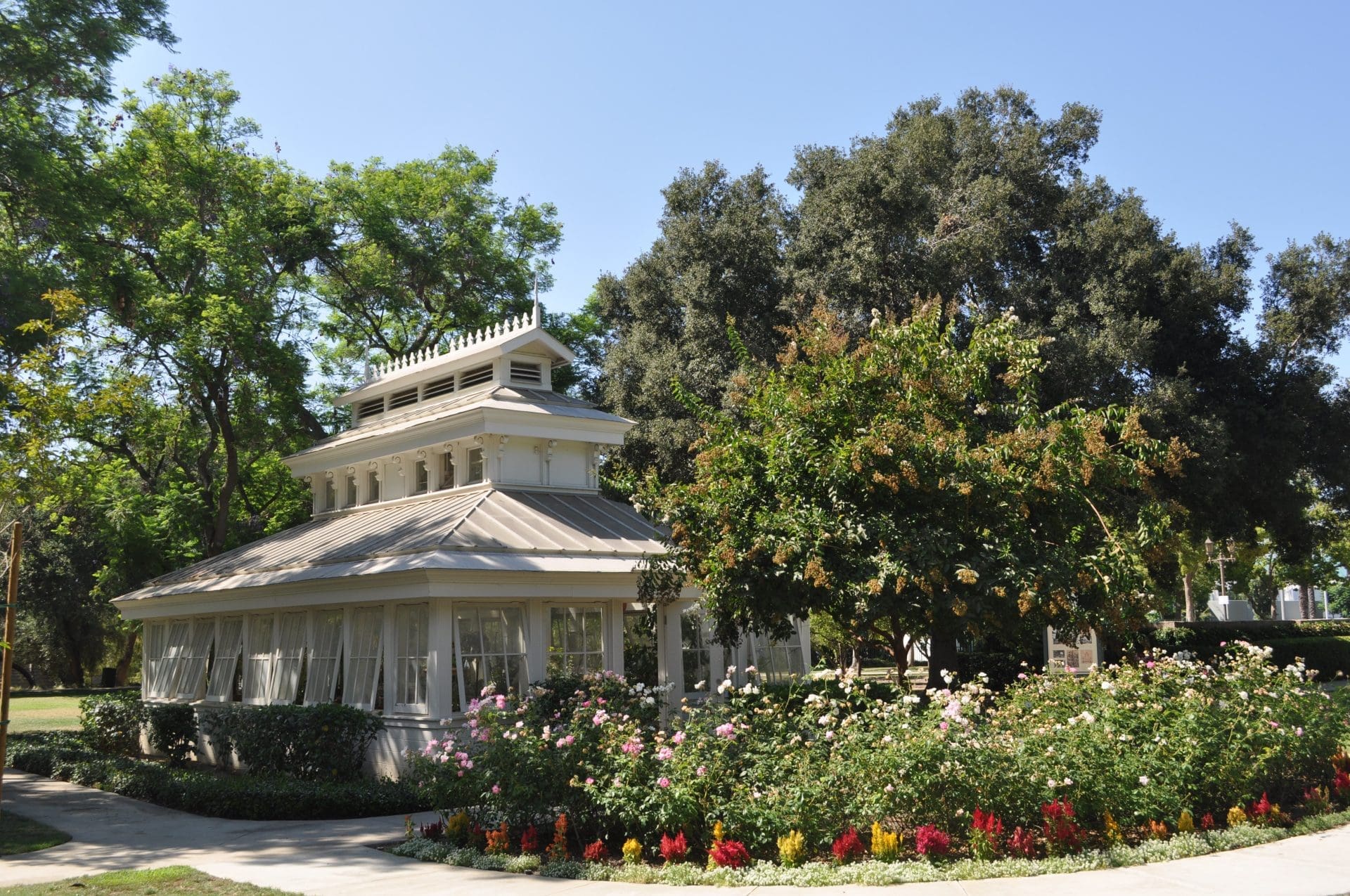
The Plant Conservatory
Built by the Hawkins family around 1880, the present Plant Conservatory is a copy of the original. The concept of the conservatory originated with the Roman’s, but it was the British who developed on the idea, allowing for citrus trees to grow in the cold English climate. Also known as a green house, the Hawkins Conservatory was used to nurture exotic plants and citrus seedlings. During this period, those that could build a conservatory were only obtained by the wealthy. Many of the plants within the Conservatory are changed seasonally, and watered by a drip system. In addition to its planting capabilities, the Conservatory can be used as a beautiful backdrop for wedding ceremonies.
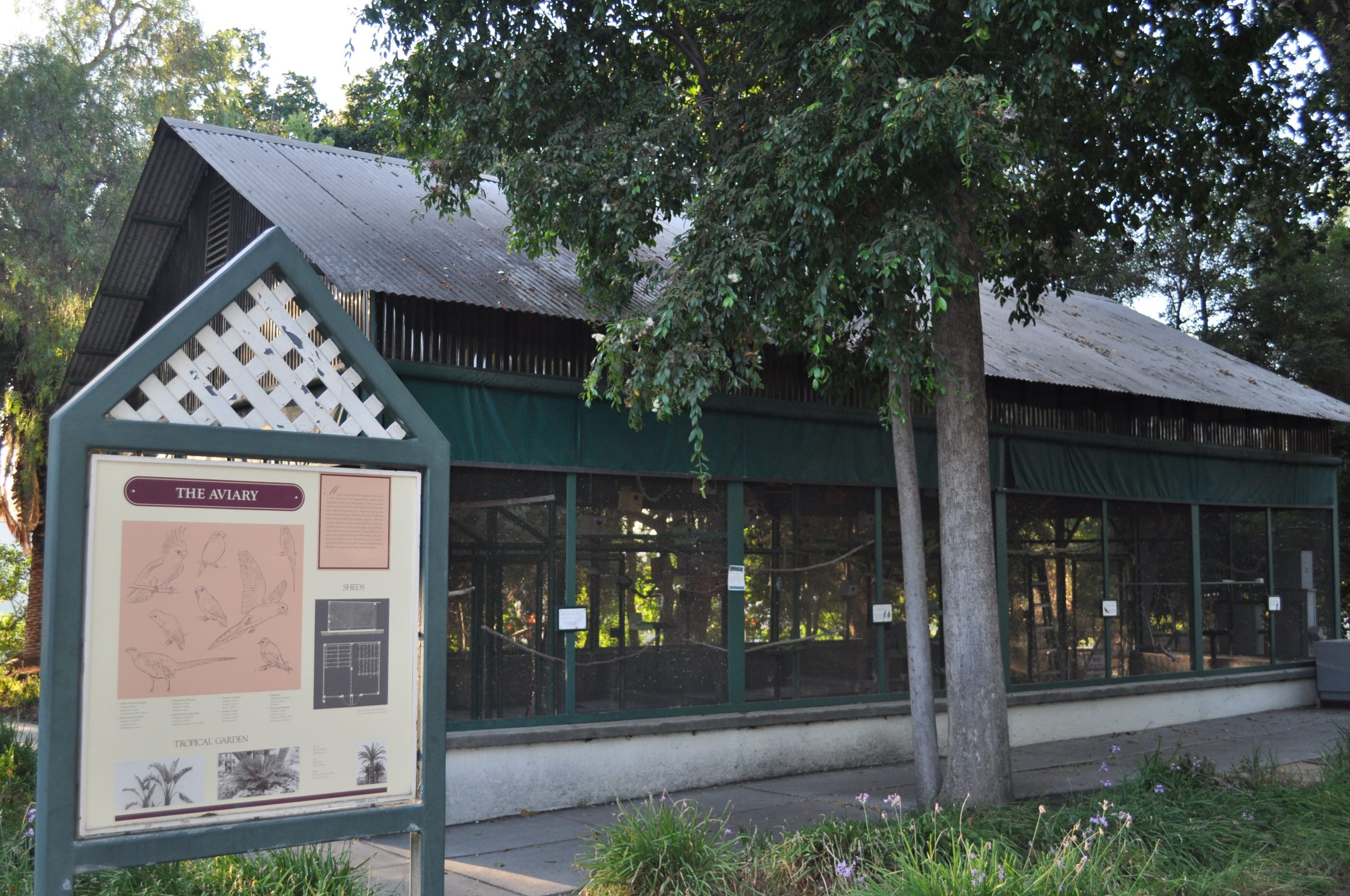
The Bird Aviary
When the park was purchased by Margaret Francis Slusher in 1919, with her husband Silas. They made many additions to the grounds, most notable, the Bird Aviary. The Slushers had a great fondness for animals and collected unusual pets; they even had a pet monkey on the property. During this period, there were no zoos in the region, and because of Mrs. Slusher’s wealth from WWI doing laundry for officers, she was able to install the aviary to house many exotic birds. Additionally, Mrs. Slusher had a large pond installed on the estate, allowing a place for ducks and geese to swim and graze. Though the birds you see before you are not from the original collection of the Slusher’s, these were selected by curators from the Los Angeles Zoo. Our Park Rangers are responsible for the care of our birds, and provide them the most adequate care.
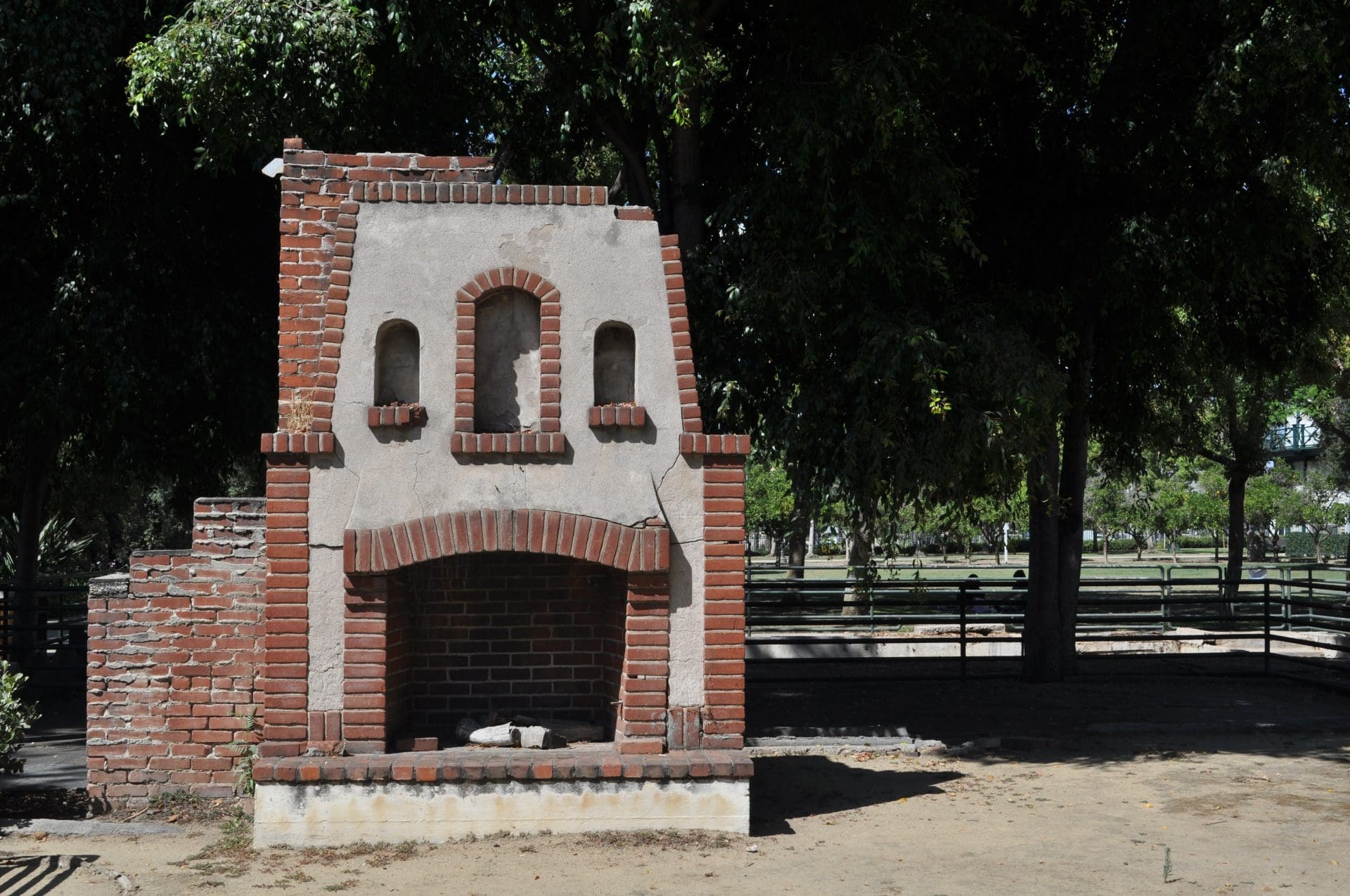
The House and Basement (Fireplace)
There were three prominent families that had ownership of the estate and house; each having their own additions and influence to the park’s historical development. The first family, the Hawkins, had a their home with 10 rooms including a parlor, library, sitting room, dining room, bedrooms and a kitchen, plus servant quarters. The final owners, the Slushers, it was reported that Mrs. Slusher made additions to have 22 or 23 rooms, before the home was destroyed by fire. Unfortunately, there are no photographs that exist of the exterior of the home; however, photos of the interior were taken when the second family, the Nimocks, owned the property in the 1890s. These photos can be found on our park signage, depicting a Victorian style of the home’s interior. Today, the dominant feature that remains is the chimney and fireplace. The chimney’s fireplace stack was present on the grounds, until the 1987 Whittier earthquake toppled 5ft of the existing structure. The Fireplace continues to stand strong, along with the surrounding foundation.
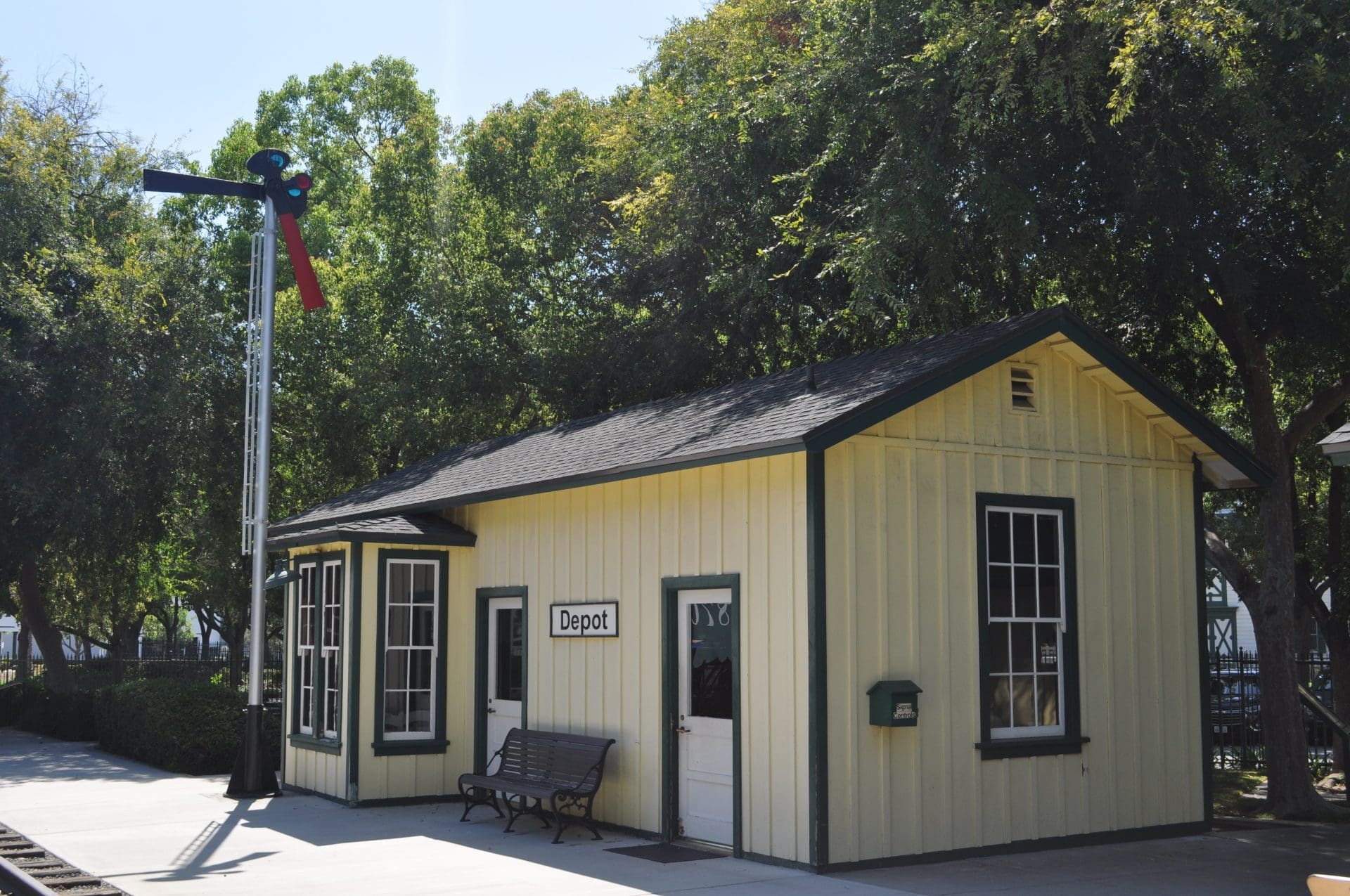
The Train Depot (Train History)
The City of Santa Fe Springs was previously known as “Fulton Wells”, until the construction of the Santa Fe railroad prompted a word change to Santa Fe Springs in 1886. The railroad’s construction would serve as an important transportation hub for local farmers’ produce and oil, beginning in the 1920s. This railroad exhibit tells the story of the City’s railroad history through the careful restoration of the Locomotive 870, Caboose, Refrigerated Car, and Santa Fe Railway Depot, which served as a telegraph operator’s office. This small depot, was no showstopper or as picturesque to its bigger counterparts in larger cities. Originally located near Bloomfield Avenue and Telegraph Road, the primary function of the depot served as the “operator’s office”, receiving and transmitting messages of passing trains and special conditions ahead. In addition to its messaging capabilities, the depot served as a drop and pick-up spot of packages for Western Union. By the early 70s the depot would be torn down by the Santa Fe Railway, and later restored to its 1920s condition during the sites construction in 1994.